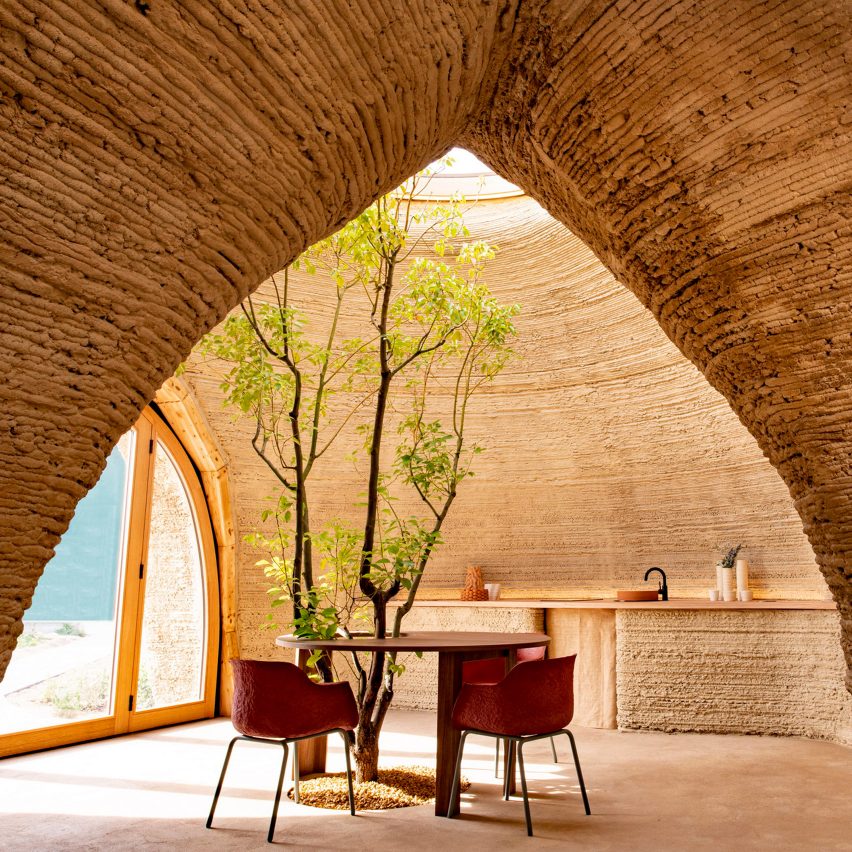
As part of our review of 2021, here are 10 examples of low-carbon architecture including buildings made of 3D-printed clay, recycled materials and biomaterials.
The most climate-friendly of these projects are net-zero or even carbon negative, meaning they will remove as much or more CO2 from the atmosphere as they will emit throughout their expected lifespan.
This is possible by making use of carbon-sequestering biomaterials, circular design principles and passive, renewable technologies for heating, cooling and energy.
As a result, the buildings not only minimise operational emissions but also the embodied carbon from materials and construction.
Read on for 10 projects that showcase how to incorporate these sustainable strategies.
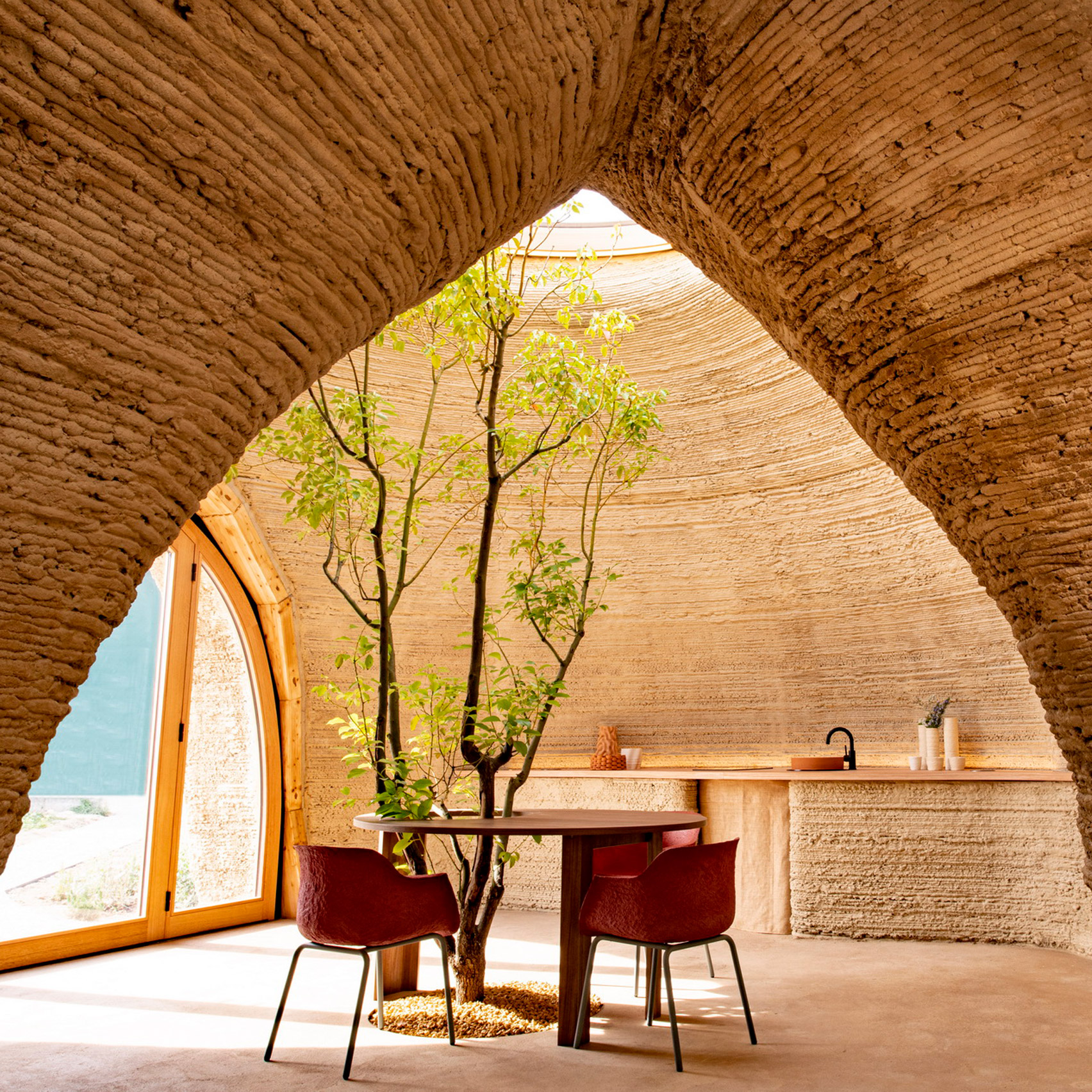
Tecla house, Italy, by Mario Cucinella Architects and WASP
Raw local clay was 3D printed in 350 layers to form this prototype home, which fuses ancient building techniques with modern technology.
The clay provides natural thermal insulation and can be recycled time and time again, with the aim of providing low-cost emergency housing for climate refugees without contributing to global warming.
Find out more about the Tecla house ›
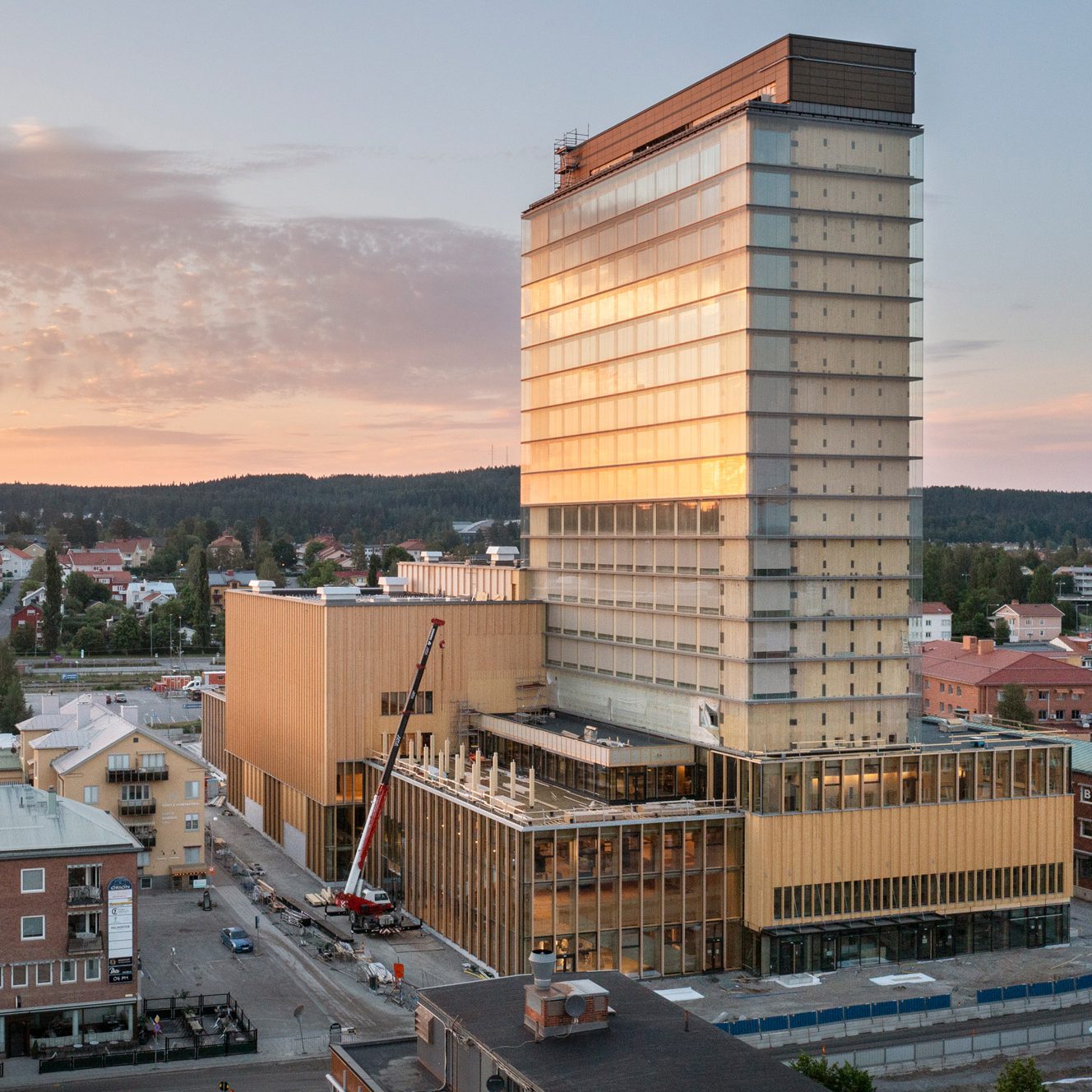
Sara Kulturhus Centre, Sweden, by White Arkitekter
This cultural centre in Skellefteå designed by White Arkitekter is the second-tallest wooden tower in the world, sequestering more carbon in its timber construction than it will emit throughout its lifetime.
Highlighted as an "exemplary sustainable project" by the UK Green Building Council as part of its COP26 virtual pavilion, the carbon-negative complex is heated by a geothermal pump and powered by 1,200 square metres of solar panels, supplemented with renewable energy from the grid.
Find out more about Sara Kulturhus Centre ›
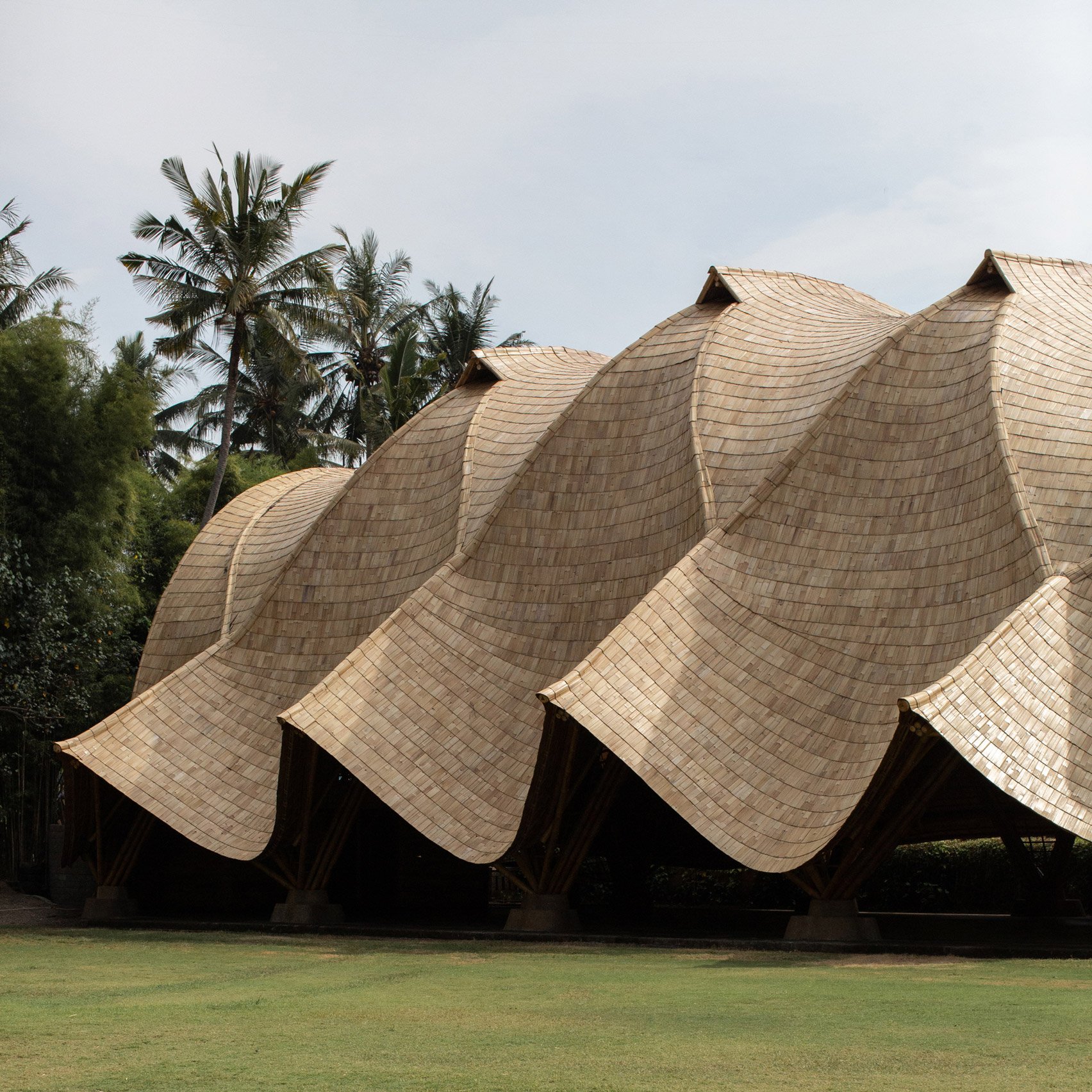
Fast-growing bamboo is bent into 14-metre-high arches to form the self-supporting, double-curved roof of the gymnasium at Bali's Green School, which was engineered to use minimal material while providing maximum floor space.
Vents at the canopy's apex allow warm air to escape while openings around the base provide natural ventilation, eliminating the need for air conditioning in the island's tropical climate.
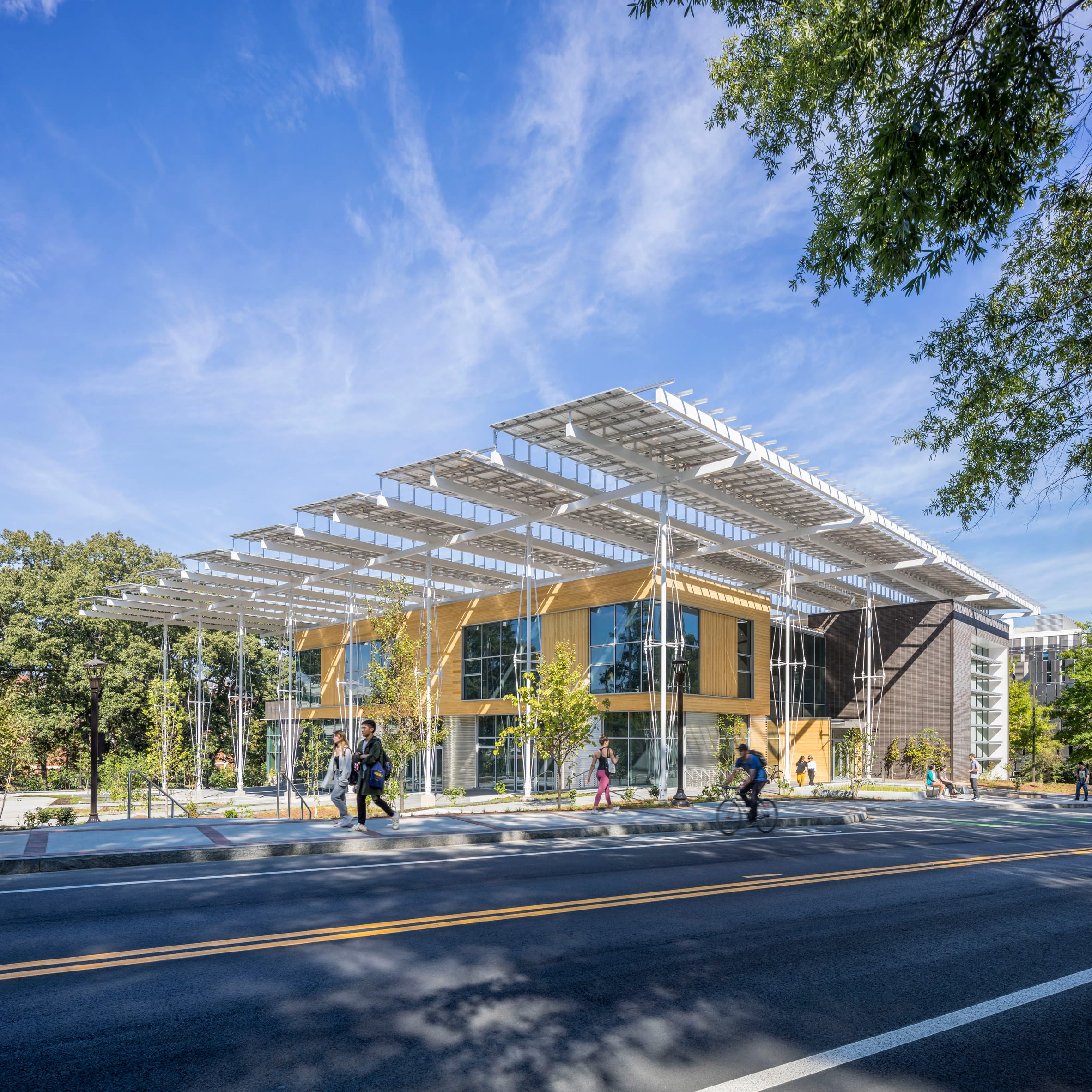
Kendeda Building, USA, by Miller Hull Partnership and Lord Aeck Sargent
Made with salvaged materials such as recycled masonry and wood from discarded movie sets, the mass-timber Kendeda Building was conceived as both a learning centre and a teaching tool to educate students of Atlanta's Georgia Institute of Technology about sustainable design.
Described as a "regenerative building", it produces more electricity via its photovoltaic canopy and recycles more water than it uses, with purified rainwater funnelled into sinks and showers before once again being treated and channelled to support vegetation in a nearby wetland.
Find out more about Living Landscape ›
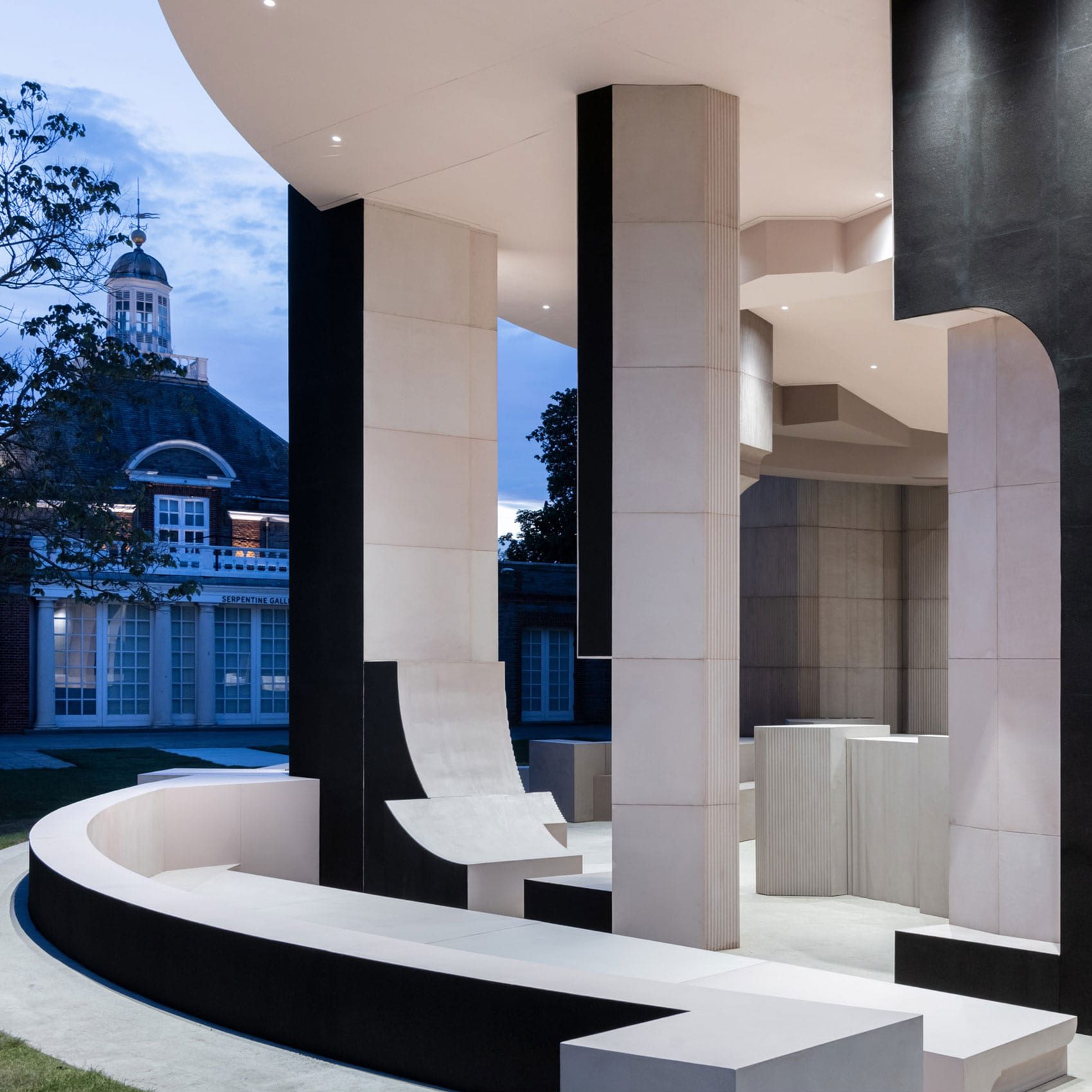
2021 Serpentine Pavilion, England, by Counterspace
South African studio Counterspace designed this year's Serpentine Pavilion as a mashup of different migrant community spaces around London, rendered in plywood that was wrapped around a steel frame and finished with black-stained cork panels.
Although the project was criticised for its use of emissions-intensive concrete for the foundation, an AECOM report shared with Dezeen showed that the building still removed 31 tonnes of carbon from the atmosphere through its biomaterials, making it carbon-negative up to the point of dismantling.
Find out more about the 2021 Serpentine Pavilion ›
Glyndebourne Croquet Pavilion, England, by BakerBrown Studio
This wind-powered garden pavilion for the Glyndebourne opera house will make use of circular economic principles in order to minimise its carbon footprint, incorporating local waste materials and a reversible design that allows the building to be disassembled and its components reused.
Diseased ash trees will be salvaged to form the structure, with its interior panelled in the venue's own discarded champagne corks bound together by mycelium and the exterior clad in tiles made from waste oyster and lobster shells.
Find out more about the Glyndebourne Croquet Pavilion ›
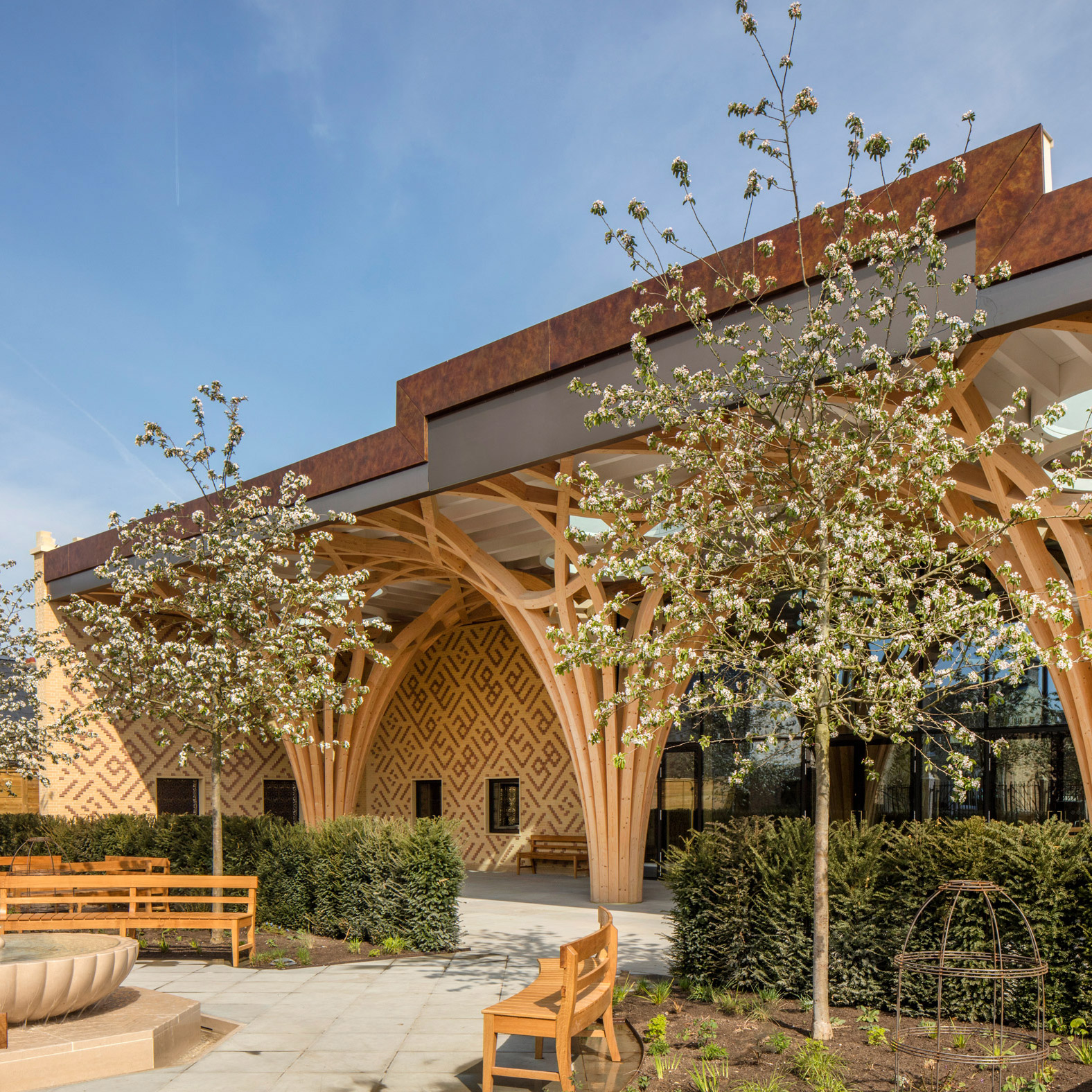
Cambridge Central Mosque, England, by Marks Barfield Architects
Shortlisted for the 2021 Stirling Prize, this mosque in Cambridge makes use of timber as a carbon-storing material to form its structural walls and tree-like pillars, which join to create the octagonal canopy holding the roof.
The place of worship is naturally lit and ventilated throughout the year, with solar panels covering all of the building's cooling and hot water needs as well as 13 per cent of the heating, while harvested rainwater is used to flush the toilets.
Find out more about the Cambridge Central Mosque ›
Living Landscape, Iceland, by Jakob+MacFarlane and T.ark
This mixed-use building, set in a former landfill site in Reykjavik, started construction in 2021 as one of 49 different net-zero urban developments which are being financed as part of the Reinventing Cities competition by global network C40 Cities.
Making use of a prefabricated cross-laminated timber (CLT) structure will reduce the building's embodied carbon footprint by almost 80 per cent compared to a typical concrete building, while operational emissions are minimised through an integrated waste-heat recovery system, comprehensive insulation and a renewable energy supply.
Find out more about Living Landscape ›
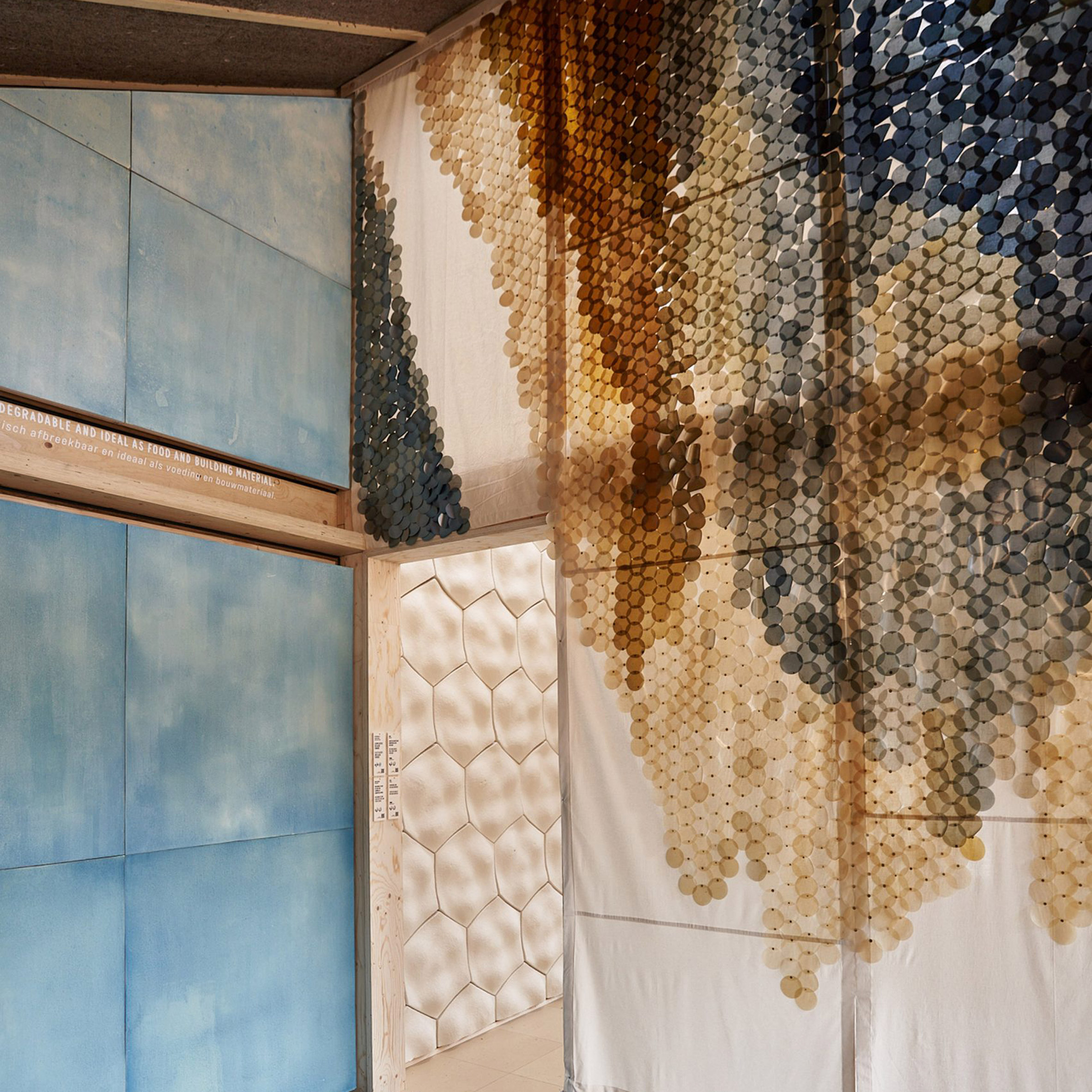
Exploded View Beyond Building, the Netherlands, by Biobased Creations
Algae textiles, 3D-printed sewage tiles and insulation made from reeds feature in this showhome built by Biobased Creations using 100 different biomaterials and showcased as part of Dutch Design Week.
All of its components, including the timber frame, are demountable and either already commercially available or coming to market soon, in a bid to show that plant-based materials are a viable option for new housing developments.
Find out more about the Exploded View building ›
Campo Urbano, Italy, by Arney Fender Katsalidis
A disused railway site in Rome is set to be turned into a low-carbon neighbourhood as part of a redevelopment project by Arney Fender Katsalidis, which will combine retrofits and reversible biomaterial buildings running on a mixture of locally produced biomass power and rooftop photovoltaics.
By designing the neighbourhood as a car-free, 15-Minute City where locals can find all the essentials for their day-to-day life within a short walk or cycle, the scheme considers not just embodied and operational carbon but also consumption-based emissions generated by the lifestyles of building users.
Find out more about Campo Urbano ›
The post Dezeen's top 10 low-carbon buildings of 2021 appeared first on Dezeen.
from Dezeen https://ift.tt/3s5jdFo
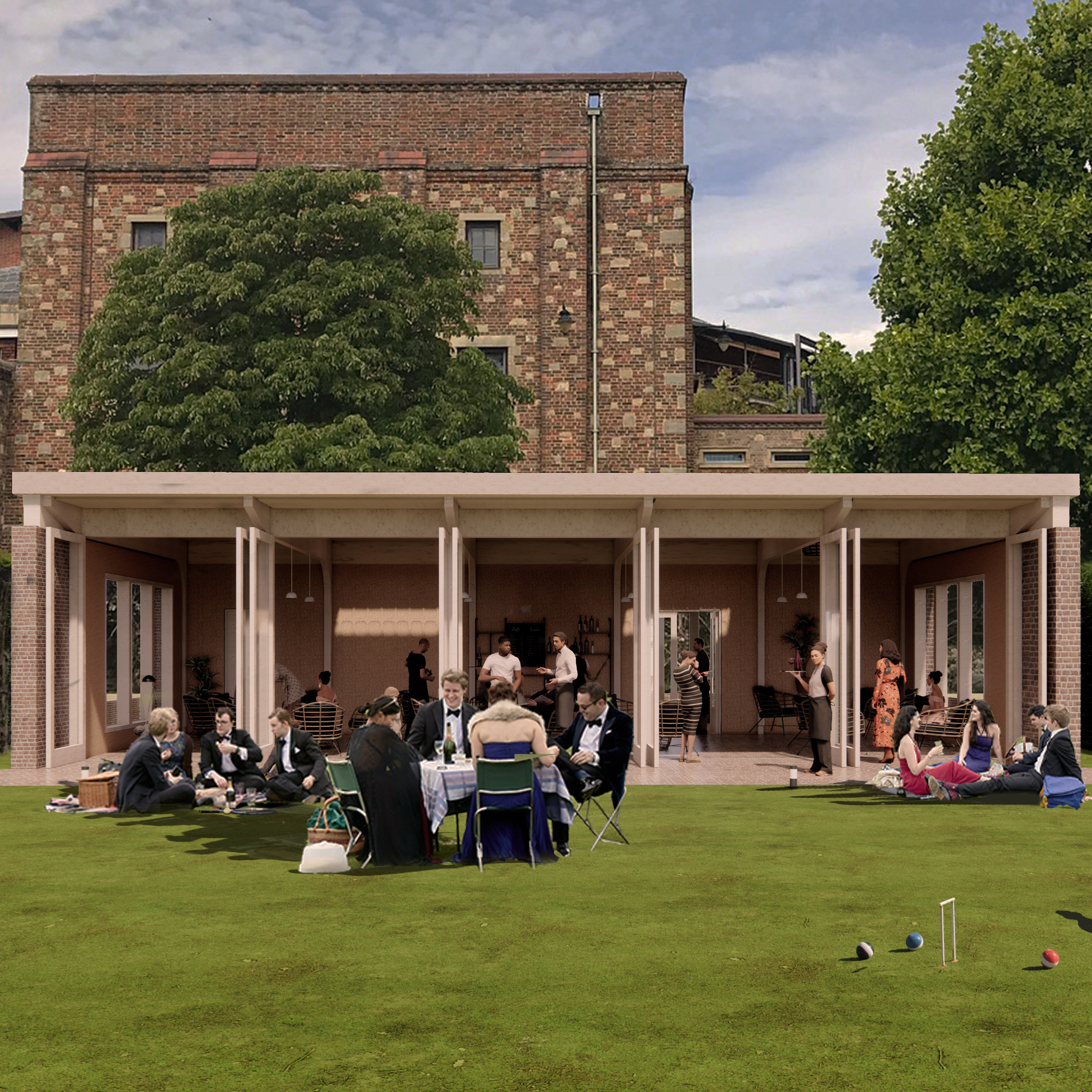
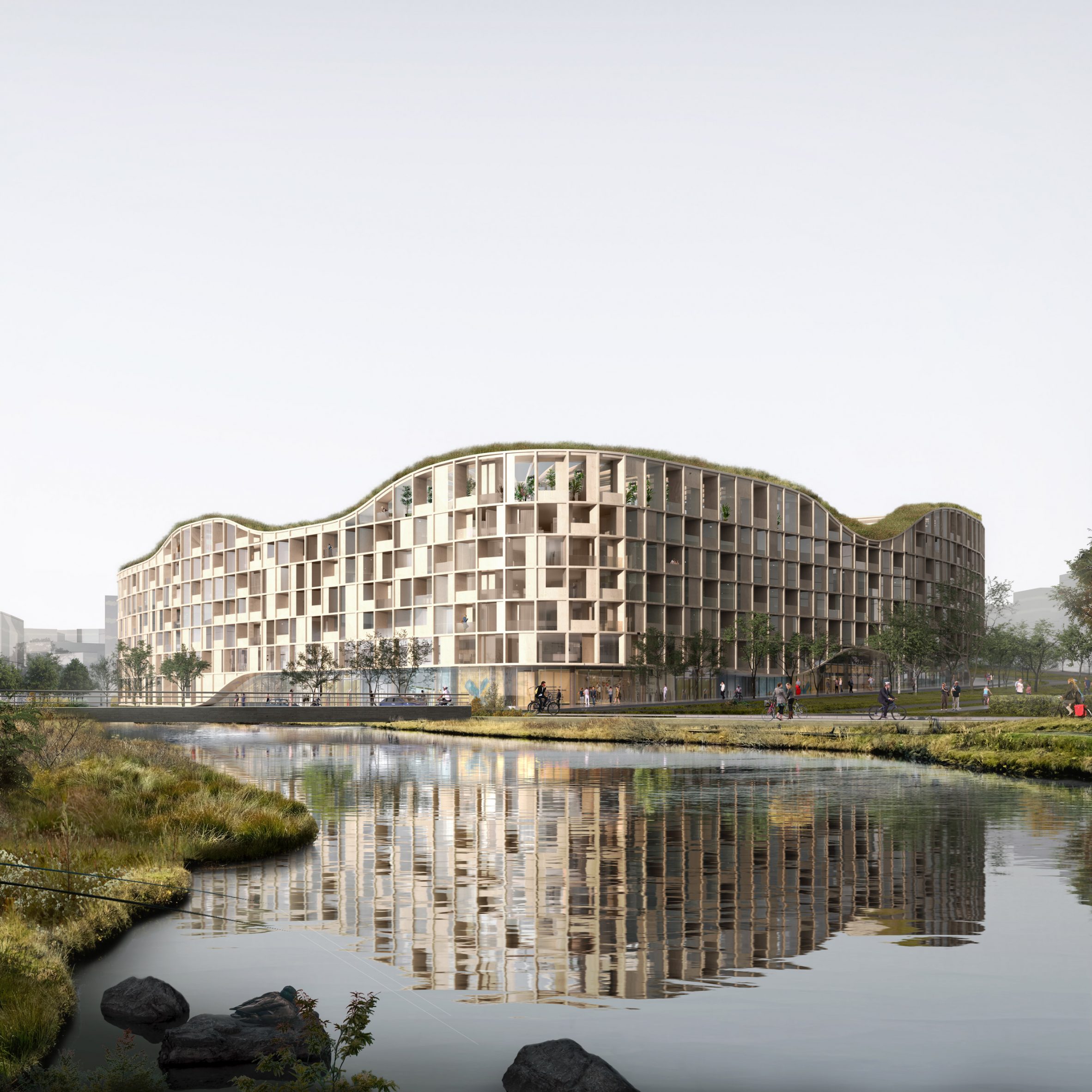
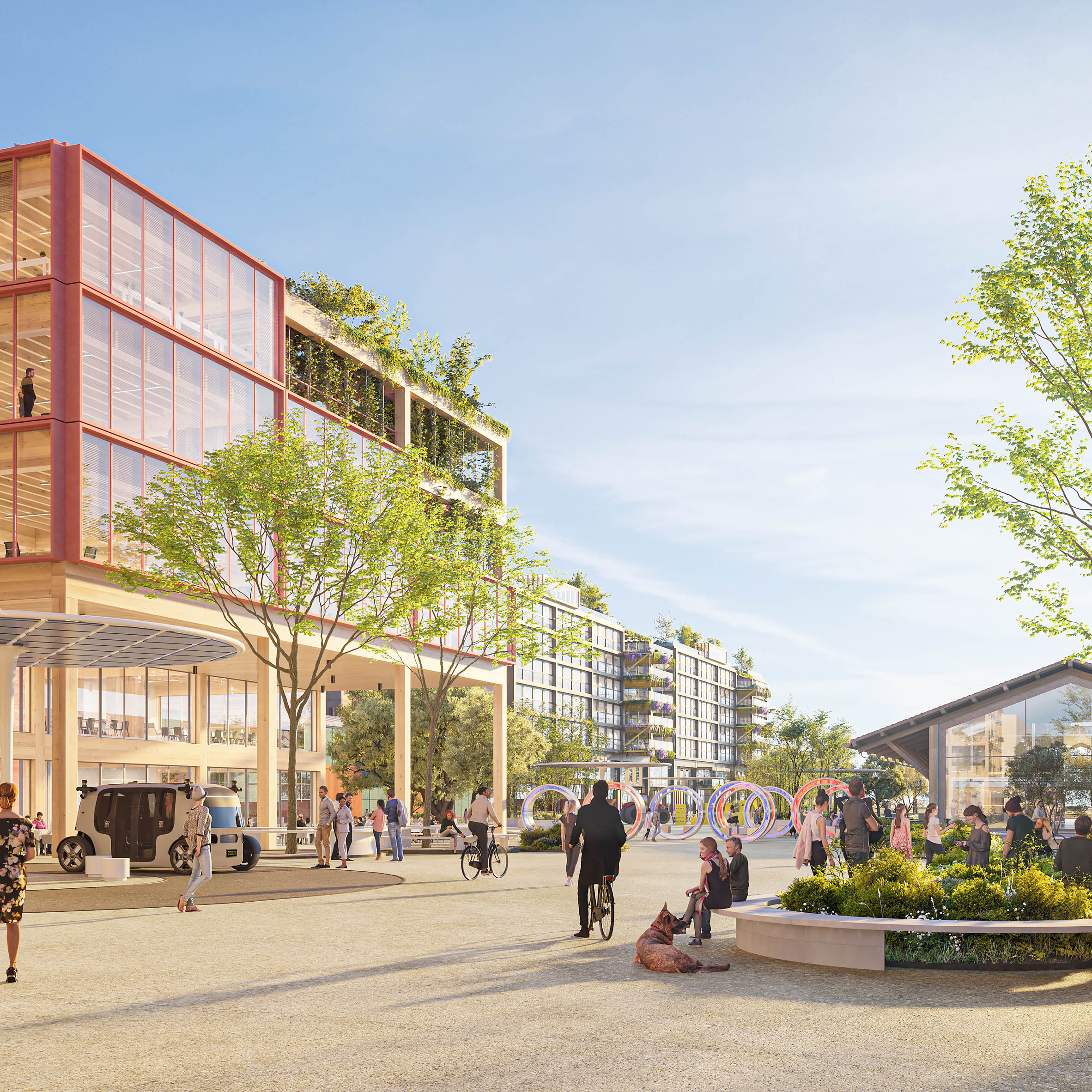
No comments:
Post a Comment